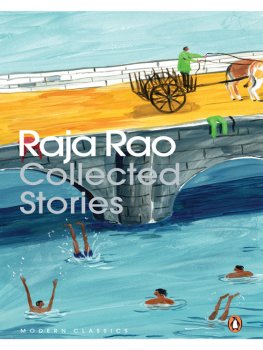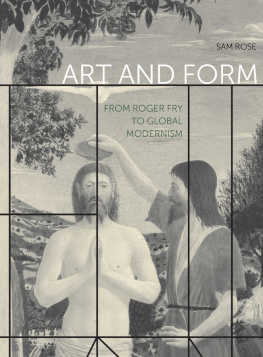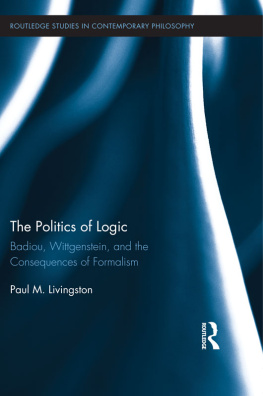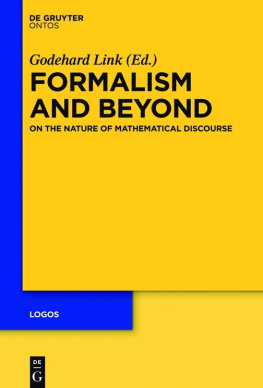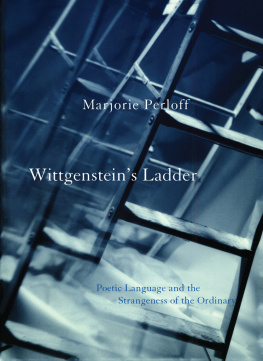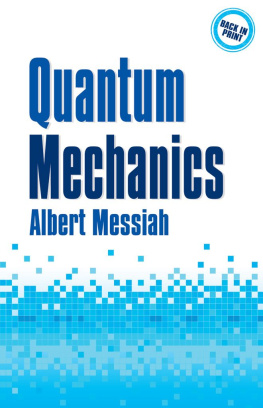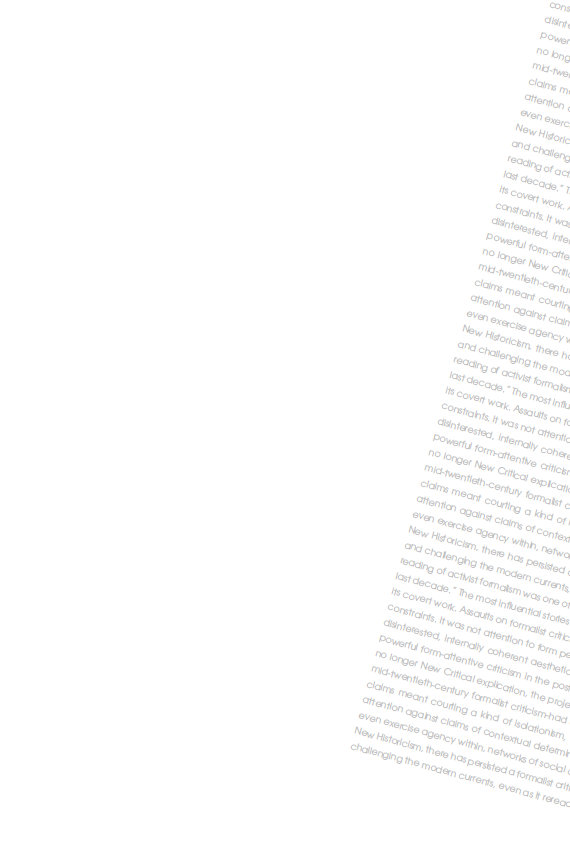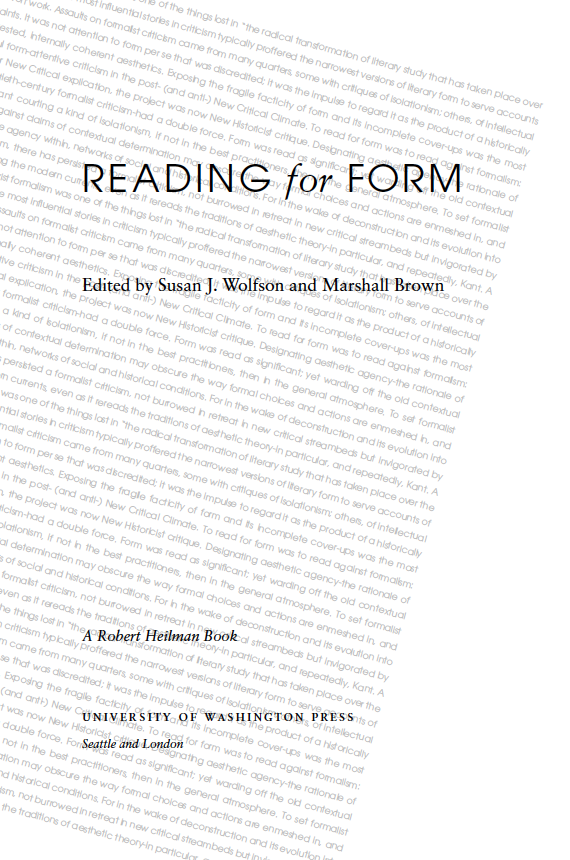a generous bequest established by Robert B. Heilman,
English Department from 1948 to 1971. The Heilman Book Fund
assists in the publication of books in the humanities.
All rights reserved. No part of this publication may be
reproduced or transmitted in any form or by any means,
electronic or mechanical, including photocopy, recording,
or any information storage or retrieval system, without
permission in writing from the publisher.
INTRODUCTION
Reading for Form
SUSAN J. WOLFSON
Have you observd a sitting hare,
Listening, and fearful of the storm
Of horns and hounds, clap back her ear,
Afraid to keep, or leave her form?
So wrote Matthew Prior in The Dove, back in the eighteenth century. It could have been a satiric squib on the plight of formalist criticism at the end of the twentieth. Though some of us had never stopped reading for form, the practice in general, as a disciplinary love, devotion, and commitment, had gone underground or out to the margins. It was an aggrieved, counter-hegemonic, coterie remnant of an earlier critical heyday, at odds with sociocultural critique, or, if added into its mix, usually put there to expose complicity with dominant oppressions and false consciousness. Or at least thats the way it felt at the fin de sicle, with no little elegy for the loss of attention to the most complex, stimulating work (and play) of literary agency. Thus it was no news in 2003 to see W. J. T. Mitchell beginning an invitational essay with a wry sigh about this addiction: Everyone knows that the concept of form has outlived its usefulness in discussions of literature, the arts, and media.
Reading for Form was tracking alongside Mitchells obituary headline, pressing against that world in which everyone knows the scoreoften, we thought, without knowing how to read for form in the first place. In exception to the everyone that Mitchell performatively overstated, formalist criticism was not only still alive in the 1990s but was exercising new muscle, first in informal discussions, then in a gathering at MLA 1997, then in a landmark issue of Modern Language Quarterly that branded the title of this expanded anthology. If those reading for form might seem to a generation of cultural critics like so many form-addicted hares not knowing how to survive the storms of history, in our point of view, a care for form was irreducibly, inextricably the force of literature in history. Lets return, just for a moment, to Priors invitation to observe. The very fun of this local satire of form-addiction depends on the lively attention of the you whom he addresses, a you that is assumed to be, if not an addict, then at the very least dedicated to the audible and visible communications of form. Priors verse converses with readers able to register the press of storm across horn to reach its rhyme in formthat safety to which storm lays a claim and against which it gets its own visibility. Priors letter-press no less than his figure of hare-sense plays a game of keep and leave: the a-rhyme cued by hare hits the atonal, splayed lettering of her ear. Not a rhyme but a disarray of sight and sound. The natural form of the hareas if starting out of embodied form into the derangements of poetic formworks conspicuously, proactively, in excess of the definition Dr. Johnson gave form in his dictionary (citing these very lines as his instance): the seat or bed of a hare.
Keeping with form without being embedded in fearful addictions, we decided to begin in earnest our conversations about the creative and critical work of written forms. We werent compacting with that 1980s-Reagan-era school of American poetry called New Formalism, a throwback to the New Formalism of the 1950s, and, like it, invested in a reactionary poetics and politics. Nor were we calling for a new New Criticism, let alone its disciplinary constraints and enforcements. The most instructive New Criticism was always more open and dialectical, anyway. The ventures of deconstructive criticism and the expansion of inquiry into the agency of history and institution gave the best formalisms andthe best historicisms new energy. We were unabashed readers for form, against the grain of those rigors that seemed more intent on information, and inattentive to its involvements with form. Even so, the MLQ event was no counter-manifesto for a new formalism, though some thought this was the only mode of impact. Thus one reviewer of the MLQ issue complained, it does not hold together as a coherent statement about formalist criticism and its aims;... is not a manifesto of a new formalism.... Its hard to see a new program for formalist literary studies emerging from this volume (anonymous report). We thought of putting this on the dust jacket as a positive advertisement. Certainly, as the essays within demonstrate, again and again, the vitality of reading for form is freedom from program and manifesto, from any uniform discipline.
A uniform discipline becomes most interesting in its unraveling. In 1998, as the winter of the Starr impeachment inquiry daily dissolved the Clinton presidency into scandals of Gap dress and power tie, the New York Times gave us a brief relief with a foray into teen culture. Cracking the Dress Code: How a School Uniform Becomes a Fashion Statement reported a bracing bit of cultural formation. Its how you want to look, said one student, unflapped by the prescription at the School of the Incarnation for white blouse, navy skirt, or slacks for girls, white shirt and navy slacks for boys. With the dressers performing as both critics and artists, the basic material proved negotiable, the dress code itself an inspiring resource. Subtle accessorizing (just cautious enough to evade a bust) was one route, a use of artful supplement, perhaps so artful that only the wearer knew for sure. The school uniform itself became multiform, its deformation producing the syntax of fashion-statement: the arrangement of collars and cuffs, the interpretation of white, the use or nonuse of sweater buttons, the number of rolls to take in a skirt waistband, form-fitting to baggy-slouching pants, knotting the tie, indulging the frisson of unseen underwearall opportunities to perform with and within the uniform.


